Davey Davis's Blog, page 20
May 6, 2022
David Davis
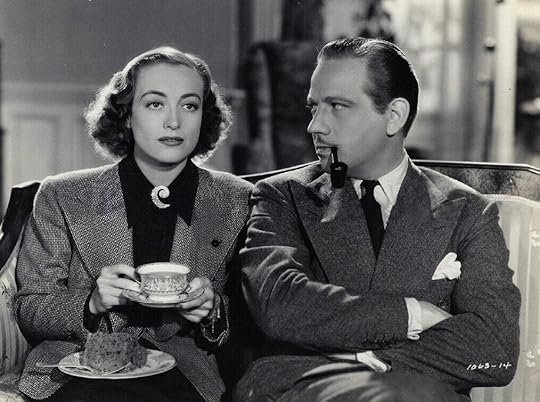
I used to work as a copywriter at a third-wave coffee company. Before I was hired, I drank Starbucks, or whatever came out of the spattered pot on someone’s kitchen counter, its bitterness concealed with creamer and refined sugar. But since everything I wrote was to be printed on packages, cans, and display cases, becoming a coffee snob was a part of the job description.
I spent a lot of time at the roastery with real coffee people—roasters, farmers, buyers, baristas—getting to know the product. Dirtying countless cupping spoons, I sipped, slurped, and huffed freshly brewed varietals from Guatemala to Myanmar. Like wine, cheese, or chocolate tasting, coffee cupping requires thinking with your mouth, nose, and tongue. You use these instruments to assess the sweetness, acidity, body, and finish of not just every cup, but every sip, of the strange tea that a billion people drink each morning.
That copywriting job, which I got in my late twenties, was my first exposure to the idea of flavor as a multidimensional experience. Growing up, no one in my family approached any sensation with that much thought or intention. My parents drank sugary margaritas, discount wine, and Budweiser. Dark chocolate didn’t exist. Cheese came in sticks or oblongs wrapped in plastic. Food in general was only of interest as a risk factor in becoming fat, not that the alternative was much better; in my families, like many other white American homes, you either became fat and hated, or remained thin and resented.
This terror of fatness informed the way we ate in confusing, contradictory ways, which varied depending on which parent my sisters and I were living with. With my single working mom, food needed to be convenient and cheap, so dinner was often picked up at a drive-thru. Though my dad had a wife to shift the reproductive labor onto (though she, like he, worked full time), there was less money but an additional kid to feed: fast food wasn’t cheap enough. Since I was often in charge of my sisters, I boiled pallets of Top Ramen and gallons of Kraft’s mac n cheese, the latter occasionally bobbing with chunks of brutalized hot dog. Then there were my stepmom’s cheap diet foods—in my teens, America was cresting the anti-fatness tsunami that’s since collapsed into the insidious “wellness” rebrand—with their carcinogenic sweetness, cardboard texture, and chemical aftertaste.
Eating what you fear is not merely unpleasant. It prevents you from asking yourself if you are enjoying your food, what people and places and meals it reminds you of, what you would change about the recipe if you were to prepare it again. It prevents you from admiring what your food looks like or how it’s been plated, or inhaling its scent before it goes in your mouth, or chewing enough for comfortable digestion, or savoring a dish that is excellent or novel or, as we say in English, made with love. Fearing your food extricates you from the moment while obliterating your connection to past or future. More than being unpleasant, fearing your food is bad for you—mind, body, and soul.
At the roastery, phone and notebook ready for note-taking, I often felt very stupid. Many of my coworkers who were learning alongside me had professional backgrounds in food or hospitality, so even if they were as new to coffee cupping as I was, they had a foundation to build on that I didn’t. Everyone else seemed to be able to identify the notes of stone fruit or fresh-cut grass or baker’s chocolate that eluded my atrophied senses. Sometimes I was convinced that they were lying, that they were just pretending to agree with any coffee’s given profile. Elbow out as I lowered my face to my spoon, I imagined the shape of my tongue and the liquid around it, trying to inhale and think and perceive without dribbling down my front when I spat into the mug reserved for waste. Though intriguing, the idea that a single spoonful of a single roast of a single varietal from a single season harvested on a single patch of land could express a rainbow of flavor, holoscoping as it cooled, was alien and frustrating. Scribbling my notes, I prayed that no one else noticed how clueless I was.
I had that job for a few years, long enough to learn a little, enough that I can now appreciate coffee in a way I didn’t before. Being addicted to this bittersweet, palm-warming drink is its own simple joy; discovering through it that sensation is not off or on, this or that, was the beginning of a paradigm shift. Flavor, which I had once experienced as a numbing agent, at best, revealed its depths. Like pleasure and pain, flavor is biomedical reality, social construct, cultural memory, and the substance of our days—the composite of living.
Flavor is interpretation, divination, introspection. I’m reminded of Alex Chee’s writing on writing in his book, How to Write an Autobiographical Novel:
To write is to sell a ticket to escape, not from the truth but into it. My job is to make something happen in a space barely larger than the span of your hand, behind your eyes, distilled out of all that I have carried, from friends, teachers, people met on planes, people I have seen only in my mind, all my mother and father ever did, every favorite book, until it meets and distills from you, the reader, something out of the everything it finds in you. All of this meets along the edge of a sentence like this one, as if the sentence is a fence, with you on one side and me on the other… Something new is made from my memories and yours as you read this. It is not my memory, not yours, and it is born and walks the bridges and roads of your mind, as long as it can.
David tweets at @k8bushofficial. Preorder their second novel, X (Catapult, 2022).
Subscribe to support GOOD ADVICE/BAD GAY, an advice series from an anonymous gay therapist who’s not afraid to hurt your feelings with the truth. (Sample an unlocked post for a taste of what you’re missing.) 100% of funds go to support a rotating selection of mutual aid and reparations projects.
Want advice? Email badgayadvice@gmail.com for a free 3-month subscription.
May 4, 2022
David Davis 39, part 2
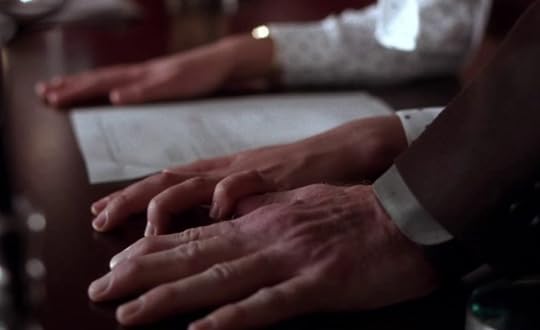
Read Part 1.
Last week, I kicked off my series about the commodification of kink with the high-profile criminal case of Ed Buck, the white gay Democratic donor convicted in 2021 of killing two black men, Gemmel Moore and Timothy Dean. Buck’s case is certainly not the first to touch on BDSM, but the way in which it was discussed, particularly by Buck’s legal team, is a fascinating nexus of contemporary popular discourses around deviant sex and the legal history of BDSM1 in America. (I promise I’m going somewhere with this.)
Sexual perversion’s enmeshment with queerness, gender-nonconformity, transactional sex, and other dimensions of sexual immorality means that there’s a long and storied history of what some (like Buck’s legal team) might today call the kink-shaming of BDSM in the American legal system2. I figure a very quick and dirty legal history of deviant sex in the USA might be useful for context.
DAVID is free, but subscribers get full access to GOOD ADVICE/BAD GAY for $5/month.
Before we get to consensual violence, let’s review consent vis-à-vis violence. In the 1886 case People v. Gordon—which regarded the sexual assault of a child—the California Supreme Court acknowledged America’s earliest consent defense to criminal assault charges. The court explained that an attempt to commit a violent injury on another person “must be made without the consent of the person against whom it is made. If it be made with his consent, it will not constitute an assault.” This established a precedent for consent in matters of “violent injury” and violent sexual conduct, though from what I’ve seen of the case, the decision does appear to conflate the two; it also states that “there must be some evidence that the act was committed without [the victim’s] consent,” putting the burden of proof, it seems, on the person who was allegedly harmed. For what it’s worth, the court found that the victim was incapable of extending that consent due to her age.
Let’s jump ahead to 1967, the year of what’s thought to be the first American assault case to reference sadomasochism explicitly. People v. Samuels was brought against a man who filmed himself binding and whipping his consenting partners. When Samuels sent his film to a company to process those sweet memories, it was reported to police and he was charged with aggravated assault. At trial, Samuels defended himself on the basis of his bottoms’ consent, but, in contravention with People v. Gordon, the court rejected his argument3: consent may not be a defense to battery or assault, except in the case of contact sports4.
But even with consent, the court went on to argue, masochists must suffer (👀) from “some form of mental aberration,” thus disqualifying both their agency and their desire5.
As recently as 2015’s People v. Davidson, the California court of appeals maintained that consent is not a recognized defense to assault, “even when based on a claim of consensual sadomasochistic activity.” Here, as in earlier American court cases, “lack of consent is not an element of the offense of assault, so the presence of consent does not eliminate the crime.” But the court in this case, as in others, is clear that consent, or lack thereof, is not the only legal consideration. In State v Collier (1982), the Supreme Court of New Jersey insisted on the state’s right to criminalize consensual BDSM activity because of the danger it posed to morality, among other things: “Whatever rights the defendant may enjoy regarding private sexual activity…such rights are outweighed by the State's interest in protecting its citizens' health, safety, and moral welfare.” In the eyes of the state, private citizens not only don’t have a right to consensual sadomasochism—they don’t have a right to immorality as the state defines it, either.
Nevertheless, the early 21st century showed progress for some American sexual civil rights, which had implications for deviant sex. Lawrence v. Texas, the landmark 2003 case in which the Supreme Court held that anti-sodomy laws targeting same-sex partners were unconstitutional, made same-sex activity legal in every US state and territory. Many arguments for the decriminalization of same-sex activity, and shortly thereafter marriage, can be applied to BDSM as understood as a kind of deviant sex6.
You don’t really need me to walk you through these arguments—DAVID readers will anticipate them and anyone sans brain worms will find them sound—but suffice it to say that since its advent, the white supremacist United States government has cynically deployed “morality” against its citizens, its colonized, and its enslaved to take and hoard power, to engorge its empire, and to surveil and incarcerate with increasing effectiveness. The state is in no position to dictate “moral” behavior, including as it regards to the criminality of BDSM; as this brief, and I’m sure not-very-good, history demonstrates, it can’t even do so according to its own internal logic.
What does this have to do with the commodification of deviant sex? More on that next time.
David tweets at @k8bushofficial. Preorder X: A Novel , out on June 28.
I’m excited to share that we now have a cover for the UK edition, available 10/28 from Cipher Press. I’ll be in London in late October—see you then!
Subscribe to support GOOD ADVICE/BAD GAY, an advice series from an anonymous gay therapist who’s not afraid to hurt your feelings with the truth. (Here’s an unlocked post for a taste of what you’re missing.) 100% of funds go to support a rotating selection of mutual aid and reparations projects.
Want advice? Email badgayadvice@gmail.com for a free 3-month subscription.
1Standing for, simultaneously and alternatively, bondage and discipline, Dominance and submission, and sadomasochism. The acronym has become an umbrella of sorts these days, interchangeably, and often problematically, encompassing terms like fetish, kink, and leather. Here, as always, I try to be intentional with the words I use.
2Have relied heavily on this 2017 article from the Hastings Women’s Law Journal.
3I am not a lawyer. I don’t know anything about the law. I’m just sharing some patterns with you here.
4Not that a masochist has ever chased their high in a race.
5Check out one of Daemonumx’s recent posts for a quick read on the “mental aberration” of sadism.
6And as recent developments with SCOTUS and Roe v. Wade remind us, the legal connections between individual sexual, medical, and gender autonomy are such that our rights regarding them are not unlike a house of cards!
April 28, 2022
David Davis 39, part 1
 Hillary Clinton with Democratic donor Ed Buck
Hillary Clinton with Democratic donor Ed BuckIn 2017, when 26-year-old Gemmel Moore’s body was found in the West Hollywood apartment of small-time Democratic donor Ed Buck, his death was dismissed as an accidental drug overdose. Two years later, when 55-year-old Timothy Dean died by overdose in the same apartment, the police ignored the coincidence. Although by then a coalition of activists and civil rights organizations were demanding an investigation, it was not until 39-year-old Dane Brown escaped the apartment at 1234 Laurel Avenue in search of emergency medical care that the police arrested Buck.
In keeping with his extensive pattern of targeting what the New York Times calls “vulnerable men,” Buck—a wealthy white man with political connections—paid Moore, Dean, and Brown—black men with little money and less clout—to return to his apartment where he “administered large doses of narcotics to manipulate his victims to participate in sex acts.” As a result of what the media has referred to as Buck’s “fetish” for “pay to play,” two men’s lives were stolen. It’s some kind of miracle that Brown, who reported that he overdosed not once but twice while he was in Buck’s apartment, is still alive.
At the time of this writing, Buck is awaiting sentencing. But in March, his attorneys filed to have his convictions overturned, arguing that the government “kink-shamed” him by “pointing the jury toward his sexual fetishes in an effort to obscure the lack of proof supporting the charges.” Buck’s conviction, his team’s argument goes, was based on “prejudicial and irrelevant character evidence…by presenting graphic images and videos of his sexual fetishes.”
The governmental power—and prerogative—to punish those who engage in deviant sex is undeniable. Buck’s lawyers need look no further than their client’s own victims to witness that same systemic prejudice against queer, drug-using, and kinky people; indeed, it took a literal grassroots movement to force the justice system to treat the lives of Moore, Dean, and Brown as if they mattered. But there were other biases that Buck’s team failed to name. Why didn’t they also invoke the anti-blackness, classism, and whorephobia that almost disappeared the tragic deaths of at least two people and the traumatization of many more?
David tweets at @k8bushofficial. Preorder X: A Novel , out on June 28.
I’m excited to share that we now have a cover for the UK edition, available 10/28 from Cipher Press. I’ll be in London in late October—see you then!
Subscribe to support GOOD ADVICE/BAD GAY, an advice series from an anonymous gay therapist who’s not afraid to hurt your feelings with the truth. (Here’s an unlocked post for a taste of what you’re missing.) 100% of funds go to support a rotating selection of mutual aid and reparations projects.
Want advice? Email badgayadvice@gmail.com for a free 3-month subscription.
April 22, 2022
David Davis 38, part 2

Read Part 1.
Set in dreary postwar Italy, Federico Fellini’s La Strada (1954) is the journey of Gelsomina, a young woman sold to a sideshow strongman by her impoverished mother. Forced into marriage to the cruel Zampanò, Gelsomina (Giulietta Masina, Fellini’s frequent collaborator and wife) learns to clown, play the cornet, and pass the hat when her new husband strips down and breaks a giant chain with his pecs. Together, they tour the greyscale countryside in his motorcycle-drawn caravan, hustling change from apathetic crowds.
Zampanò—an electrifying Anthony Quinn—treats sweet Gelsomina very badly, though his violence is occasionally intercut with watchful, if not kind, ministrations. As A.H. Weiler wrote of the “ruthless” strongman for the New York Times, “[Quinn’s] characterization is sensitively developed so that his innate loneliness shows through the chinks of his rough exterior.” Even if the dainty Gelsomina, with Masina’s Chaplinesque face-pulling, wasn’t immediately dear, Zampanò’s monstrosity ought to mire him in one-dimensionality; yet Quinn renders a human sadist, one who cares about Gelsomina, if not for her.
But back to our story. One night, Gelsomina finds herself mesmerized by the Fool (Richard Basehart), a high-wire artist who balances miraculously above a packed city square. When she and Zampanò join up with the Fool’s circus, he goads her master into a fight. With Zampanò in lockup, Gelsomina confesses to the Fool that she wants to run away, maybe with him, but he convinces her not to leave. Bluntly but good-naturedly identifying her general worthlessness—she can’t cook, he explains, and has a face like an artichoke—he suggests that it may be her lot to remain. “Everything serves a purpose,” he says, “even the stones.”
As if in ironic cosmic punishment for his meddling, upon Zampanò’s release, the strongman finishes what he started, killing the Fool. He and Gelsomina go on the run together, finally converging with the tragic fate awaiting her in the snowy alps of the Abruzzos.

La Strada is the same movie today that it was 70 years ago, but compare its reviews over the decades to witness Gelsomina undergo an evolution of sorts. In 1956, Weiler describes Masina’s character as “simpleminded.” In 1993, Martin Scorsese adds to Weiler’s epithet: she is a “simpleminded waif.” In 1994, Roger Ebert boldly diagnoses her as “slow-witted.” In 2002, it’s the noun that is modified: Gelsomina is still a waif, but a “clownish” one. Sometimes the reviewer will sidestep mention of intelligence altogether, which tends to happen more as the reviews creep closer to us in time. In 2015, she is “sweet and naive” (as if intelligence and demeanor are not entirely extricable from one another); in 2021, she is “quiet and eclectic.”
In his 40th anniversary review of La Strada, Ebert refers to the film as a fable, a forgettable inaccuracy. But fable and parable, which to me have always felt interchangeable, are actually distinct. Both are forms of naive allegory that illustrate an instructive lesson or principle, but while parable usually has human characters, fable tells the tales of non-humans. Parable: despite his tribal enmity, a Samaritan stops to tend to the wounds of an injured Jew. Fable: tortoise beats a hare in a footrace.
Not that I miss Ebert’s point. I think, in using fable, he’s trying express La Strada’s profound simplicity, especially in comparison with Fellini’s later films, observing that it “contains many of the obsessive visual trademarks that [Fellini] would return to again and again: the circus, and parades, and a figure suspended between earth and sky, and one woman who is a waif and another who is a carnal monster, and of course the seashore.” Peopled by people and animated by archetypes both personal and general, the parable of La Strada holds a dreamy three-way with itself and history, working and reworking its themes like a taffy puller. Fellini himself called it, “the complete catalogue of my entire mythological world.” Simple, in this context, means essential, or perhaps fundamental. But as we have noticed about the language used to talk about Gelsomina—who, in the non-stigmatizing parlance of today, might be called intellectually disabled—simple can mean other things, too.
Ebert’s flip-flop opened something up for me. Italian neorealist films like La Strada (which, per Ebert, was the “bridge between the postwar Italian neorealism which shaped Fellini, and the fanciful autobiographical extravaganzas which followed”) are characterized as stories about everyday life among the poor and working class in the ruins of World War II and the wake of Italian fascism. They’re honest narratives of quotidian struggle, sacrifice, and the dehumanization of poverty and want. While it was certainly not his intent, Ebert’s inversion beckons us to inspect what it means to be human, and otherwise, a little more closely. The main characters of La Strada are poor, itinerant, and uneducated. Our protagonist, the luminous Gelsomina, is also young woman and, what’s more, a “simple” one; in her short life, she is beaten, raped, trafficked, and abandoned as a matter of course.
And yet. “[Masina] is expert at pantomime, funny as the tow-headed, doe-eyed and trusting foil and sentient enough to portray in wordless tension her fear of the man she basically loves,” writes Weiler. Both Masina and Quinn transcend, their craftspersonship powerful enough to carry us along with them (strongmen both!). This clarity disrupted my instinct to fixate on the cinematic ableism in relation to Gelsomina as a character. As I’ve written before, I grew up watching maudlin “inspiration porn” parading as art, one of the few mainstream genres where contemporary artists and characters with cognitive, intellectual, and developmental disabilities can be found as something other than a punchline. Naive allegory or not, it was invigorating to see what we would now frame as a disabled character of this kind being taken seriously.
For those non-disabled people who can only find it in themselves to infantilize those like Gelsomina, so-called innocence is easily interpreted as virtue. And it’s true that she’s good: though unintelligent, she is smart (and I mean what I say), resourceful, courageous, kind, and strong, for a time creating a real life for herself from the meagerness she’s dealt. But it’s also true that she, like her brutal husband, whose cruelty challenges the very concept of forgiveness, is a person—though, in keeping with Fellini’s allegorical form, of a type that no longer exists, and perhaps never did.
David tweets at @k8bushofficial. Preorder X: A Novel , out on June 28.
Subscribe to support GOOD ADVICE/BAD GAY, an advice series from an anonymous gay therapist who’s not afraid to hurt your feelings with the truth. (Here’s an unlocked post for a taste of what you’re missing.) 100% of funds go to support a rotating selection of mutual aid and reparations projects.
Want advice? Email badgayadvice@gmail.com for a free 3-month subscription.
April 7, 2022
David Davis 38, part 1
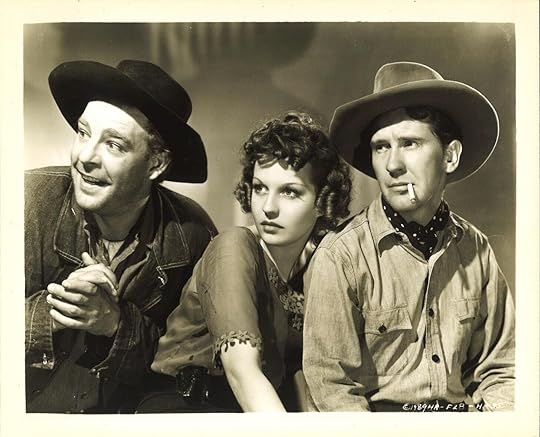
When I was 8 or 9, I found a copy of John Steinbeck’s The Pearl on a shelf at my mom’s house. It was a cheap student paperback, brown but glossy, and small enough that you felt like you were reading something secret—a diary or a spell book. I took it with me to school and read it under the sycamore oaks. Spare and sure-footed as a parable, The Pearl was like if a Bible story was also Captains Courageous. When the scorpion stung the baby, Coyotito, I felt its hot barb in my flesh, too.
Steinbeck was a favorite after that, but years later, when a high school English teacher assigned Of Mice and Men, I remember peeling open the novel with a sigh of resignation. Dourly inviting us to reflect upon the mercy-killing of a disabled man by his only friend, Mrs. Something—a vapid woman with a white stripe where her scalp pared her shitty home-dyed bob—invited ambiguity where the great Californian author hadn’t sown any. Steinbeck’s villains are, as ever, the bosses, including the woman that Lennie mistakenly murders. But Mrs. Something was more interested in cross-examining Lennie’s life, scrutinizing it for value. In her classroom, naked injustice became a parlor trick or ice-breaker question. We wasted that period on the titillating sacrifice of a simpleton, instead of the evils of capitalism.
Thankfully, moral quandaries of that sort didn’t arise very often in school. There’s only so much performative pity that even wretches like Mrs. Something—who once explained that since we needed more women authors in our curriculum, she had quadrupled the number of Jane Austen novels—can puke up for stock characters like Lennie: childlike white men who are unable to stop themselves from committing sexy sex crimes against bad women. As is the case for the protagonists of Keyes’s Flowers for Algernon or Faulkner’s The Sound and the Fury, Of Mice and Men’s Lennie is sweet, horny, abandoned, abject, and doomed (these men are also impoverished assault victims, too, but no one seems to care about that). My teacher is a stupid person who believes human value is measured in IQ points. I’ve dozed off in more than one cold, bony desk while trying to Heimlich that particular ouroboros.
It was around then, at 15 or 16, that I began to be visited by a nightmare that I won’t describe here. It still comes around sometimes, when things aren’t going so well.
David tweets at @k8bushofficial. Preorder X: A Novel , out on June 28. It just received a starred review from Publishers Weekly, so that’s pretty neat.
Subscribe to support GOOD ADVICE/BAD GAY, an advice series from an anonymous gay therapist who’s not afraid to hurt your feelings with the truth. (Here’s an unlocked post for a taste of what you’re missing.) 100% of funds go to support a rotating selection of mutual aid and reparations projects.
Want advice? Email badgayadvice@gmail.com for a free 3-month subscription.
April 4, 2022
Exclusive | Zach Ozma on queer art
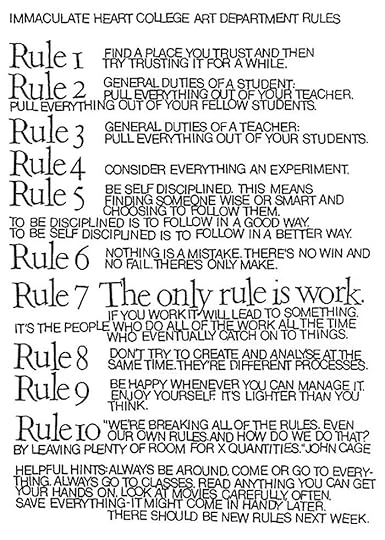
For our last installment of GOOD ADVICE/BAD GAY, interdisciplinary artist and author Zach Ozma was kind enough to weigh in on a queer art question from a budding perv afraid of community backlash for edgy work.
Wrote Stuck In My Head, “1) I'm afraid to start working because I don't think my skill level will ever match what I imagine in my head, and 2) I want to write about disgusting, depraved things that scare me. I want to write about queer people with fucked up morals who have gross sex and fuck each other over…I guess I'm afraid of backlash from my family and friends, or on the other hand, backlash from the kinky queers that I want to like me if I end up misrepresenting their communities, since I haven't been able to form my own yet.”
Read on for Zach Ozma’s paywalled advice about the work of art work1.
Your skills not matching your imagination is a Certified Universal Artist Problem. With so much love in my heart, I tell you to suck it up.
April 2, 2022
GOOD ADVICE/BAD GAY #14: on queer art

GOOD ADVICE/BAD GAY is an advice series from an anonymous gay therapist1 who’s not afraid to hurt your feelings with the truth.
Last time, we asked readers to submit their queer art questions to be answered by today’s guest, interdisciplinary artist and author Zach Ozma. All submissions were entered into a raffle for prizes made by Zach (congrats to J and K on their victories!).
For this entry, Bad Gay and I decided to be extremely generous and share Zach’s answers with everyone. HOWEVER, only subscribers will be able to access Zach’s advice for comic artists, including homework assignments for structured creative play and a list of controversial queer artists to look to for inspiration that Zach and I came up with together.
Subscribers should also stay tuned for next week, when Bad Gay will also weigh in on this question. That will be paywalled, too, so if you want to know what Bad Gay thinks about queer art, well…you know what to do.
Hi Zach and Bad Gay,
I'm a young trans man and aspiring artist/kinkster. I have a lot of ideas for things I want to make and things I want to do. My passion is making comics, and I have a few short ones under my belt. However, I've never made a comic that I was completely excited about.
I think this stems from a couple places: 1) I'm afraid to start working because I don't think my skill level will ever match what I imagine in my head, and 2) I want to write about disgusting, depraved things that scare me. I want to write about queer people with fucked up morals who have gross sex and fuck each other over.
I know there's a market for stuff like this because I myself want to read it, but I think it takes a certain amount of courage to put something like that out into the world that I'm not sure I have. I guess I'm afraid of backlash from my family and friends, or on the other hand, backlash from the kinky queers that I want to like me if I end up misrepresenting their communities, since I haven't been able to form my own yet.
Do you have any advice on getting past these fears and just creating already??
Sincerely,
Stuck In My Head
Subscribe To GOOD ADVICE/BAD GAY
Dear Stuck,
Few things make art-working less exciting than imagining future reviews. I have a great deal of empathy for your worry about what The Public will think of your art work and by extension you. Ask Ellis Martin—I was 100% sure our edit of Lou Sullivan’s diary would be too much sex for the people to handle, and that they’d all hate us for perving up a nice, neat trans historical figure.
Perhaps you’re even encountering a universal artist anxiety about reception. But let’s not mince words: this one’s harder when you’re queer.
If you are a person who wants to be good and who perhaps has also come of age in a dogmatic queer community with lots of unclear rules about how to be good, you may find yourself with some anxieties about how your people perceive you. It may be hard to let go of imagining all your actions through the lens of a publicist who is trying to not get you canceled. Nobody gets any good art-making done under that level of self-scrutiny. I personally can’t even draw a full breath when I feel that way.
So what do you do? For one thing, you build tolerance for receiving rejection or misdirected aggression—some people are going to HATE your work. It’s fine. You probably hate their work, too. Most of the time, they will not tell you. (I’m hoping Bad Gay can say some therapisty things about building tolerance.) Editor’s note: They will, next week!
For another, you make some conscious decisions about how to protect your own feelings: using a pseudonym for privacy, not reading your reviews, asking for only a specific kind of feedback, choosing which work is for social media and which isn’t, not showing work to family, wearing sunglasses so no one can see you cry.
For yet another, you make attempts to disentangle your personal goodness or morality or values from queer clout-chasing via buzzwords and walking on eggshells. Actually, Darryl author Jackie Ess probably says better things about this than I do, or anyway a lot of what I say I got from her:
“I really wanted to write outside of a slightly valorized political identity, because that’s something that felt very uncomfortable for me to wear. I walk poorly in heels and balance poorly on pedestals. Just let me wobble on this way.”
Whether or not your art receives backlash is essentially a marketing question. You, Stuck, identified the market for your work (the fact that you yourself want it!) as a reason to make it. It’s difficult (though not impossible) to sell art work that doesn’t exist. Try to put off imagining publishing and exhibiting the work. Publishing and exhibiting are administrative tasks. Making the work is a studio task. I find it helps to separate them. Are you unable to avoid seeing the future audience when you are doing studio work? Try to have an exhibitionistic experience with that fantasy.
As queer artists, we are conscripted into a multi-generational conflict with interests that seek to censor deviant cultural production. Forces governmental, social, religious, educational, and simply snobbish move at all times to squeeze gay and erotic art out from the visible realm of Art and into the musty, beaded-curtain dim of Pornography. This used to be trendy on the Right, but lately more lefties seem to be riding the anti-sex wave.
You “want to write about queer people with fucked up morals who have gross sex and fuck each other over.” Good! I actually don’t think art needs to tell a morality tale. A lot of art for children does this, and art for children is popular for queer people. Maybe Steven Universe queers simply aren’t your audience—it’s ok! They have plenty of art to look at. Me? I want more smut.
I actually think it is our obligation as queer artists to make real our most out-there ideas. This kind of art has enemies who would like to see it dead. I am telling you, it is your duty to add your fucked up, depraved comics to the visible realm of art. There’s plenty of sexual art out there that isn’t my taste or just doesn’t turn me on, but I am grateful for every bit it because it expands the visual realm, taking that big squeeze off me and my work a little.
As poet Essex Hemphill puts it:
“They’re too busy
looting the land
to watch us.
They don’t know
we need each other
critically.
They expect us to call in sick,
watch television all night,
die by our own hands.
They don’t know
we are becoming powerful.
Every time we kiss
we confirm the new world coming.”
Every time we write queer texts, produce queer images, do queer actions, we confirm the new world coming. You worry about misrepresenting kinky, queer communities in your work because you haven’t found your own. What if you find your people BY making the work? We need each other critically. What is it about their experiences that draws you? What do you want to mimic or try on? Can you become part of what you want to represent? Is your art a way you might enter into the communities you desire? Are you a voyeur? Is that wrong?
Want to read Zach’s advice for comic artists, homework assignments for structured creative play, and a list of controversial queer artists to look to for inspiration? Subscribe for $5/month for all that and more.
Gonna be in Philly this month? Support Zach in person at:
Vicarious Love Artist’s Market
Love City Brewery, April 23 12-7pm
West Craft Fest
The Woodlands, April 30 11am-5pm
Thank you so much for supporting GOOD ADVICE/BAD GAY! As you know, 100% of your subscription funds go to mutual aid and reparations projects.
For this edition, we’re splitting $4,200 between National Bailout and Philadelphia’s Morris Home. $2,100 will go to National Bailout, a Black-led and Black-centered collective of abolitionist organizers, lawyers, and activists building a community-based movement to support our folks and end systems of pretrial detention and ultimately mass incarceration, and $2,100 to Morris Home, the only residential recovery program in the country to offer comprehensive services specifically for the transgender community.
Bad Gay and I thank you for your continued support. We’re all in this together, so let’s act like it!
David tweets at @k8bushofficial. David is not Bad Gay. David is DAVID. Bad Gay and David are two separate entities, brought together by a shared passion for being gay and mean. Read more GOOD ADVICE/BAD GAY.
1This column is meant as a source of advice and entertainment, and should not be considered therapy or medical advice in any way, nor does it establish a therapeutic relationship. If you are seeking either, please look into appropriate venues.
March 21, 2022
David Davis
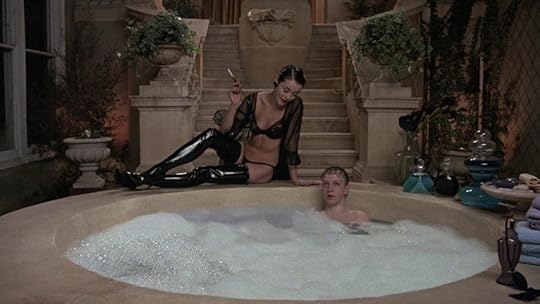
If you saw me writing on my vacation, no you didn’t. See you in April.
As regular readers may have noticed, I do my best to distinguish SM from sex without separating them entirely. The reasons for this are both practical and political.
The practical: you must know what you want to get what you want (failing that, you should know when you don’t know what you want). For me, deciding with my partners whether and how a scene will be sexual makes good common sense. Being prepared instead of spontaneous—or rather, preparing to be spontaneous—is as impedimentary to a good time as determining whether someone has a latex allergy or figuring out who will host. Which is to say that it isn’t impedimentary at all.
The political: Dismissing leather as purely sexual is a tactic to delegitimize its role in liberation movements and its function as a hub, engendered by semi-legal and illegal sexual behavior, for “interclass communication,” to paraphrase Chip Delany’s Times Square Red, Times Square Blue. It’s also the mechanism by which perverts are pathologized and disciplined by the state and its apparatuses. Unfortunately, sanitizing leather of its sexuality—and of its history—has more recently emerged to accomplish, essentially, the same goal.
So, to recap: sex and SM are not the same thing, except when they are. As I gestured toward in one of my most popular DAVID posts, this nuance is as complicating as it is clarifying. “So-and-so is looking to get topped,” a friend might reveal about another friend. “Sex-topped or SM-topped?” a third friend demands1. Often requiring friendly debate, this distinction translates into the best kind of gossip: informative yet mysterious, satisfying yet inconclusive. (How dull it would be to be confined by sexual and romantic scripts that don’t allow for erotic detective work!) In denaturalizing sex and pleasure and divesting from monogamy and legal/biological family, we begin to have more choices, both with regards to what we “can” do2 and, more importantly, to what we can feel and experience.
Freedom isn’t free (non-derogatory). When we shred the scripts for normal, legal, sane, healthy, procreative heterosexual kinship, our relationships transform, multiply, and variegate. When you abandon the dating-to-monogamous-marriage pipeline; when you second-guess the idea that it’s natural to want family, sex, or your experience of gender to be a certain, specific, predictable way; when you begin to experience your feelings as they arrive rather than resist the unexpected ones, the clock starts working against you. Allowing your body to perceive, react, process, luxuriate, suffer, grieve, and heal requires more time than capitalism allows.
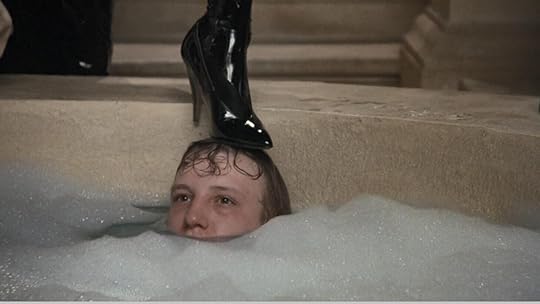
In February, I began writing about a scene I did with my friend Daemonumx, which was my first proper scene with her as a rope bottom. She tied me up and dangled me from a bespoke suspension structure in her apartment. I was warned that it would hurt, but it didn’t.
“That’s because you’re an experienced masochist,” Daemonumx said. This was validating but also scary, because it meant that she, as an experienced sadist, must hurt me harder in order to attain the effect we’re both looking for.
In rope, strength, flexibility, and well-developed interoception and proprioception3 can make your pain threshold higher, but as I’ve learned through yoga, the shapes that your body can make don’t really matter to the practice itself. Headstands and half-monkeys are impressive, but they’re not the point (in fact, advanced poses like these are only a couple hundred years old, while yoga itself goes back millennia). Attaining calm and relaxation through meditation, breath work, and a good stretch can be done by any body. The rest is just showboating.
So it goes with rope, or any other kind of scene. Discovering your limits4 while experiencing a full spectrum of sensation is a value-neutral activity that is relative to your unique body. I am deeply moved and intimidated by heavy masochists, and am likewise sometimes dismissive of SM activities that no longer challenge me, but in my better moments, I’m one of those people who basically thinks that everyone should get a trophy just for participating. A practice is not a competition, and treating it like one is a waste of everyone’s time.
While it’s tempting to pat myself on the back for needing more, Daemonumx can give it to me with humbling ease. Last week she tied me again, and this time it did hurt, though it could have hurt more (and probably will next time). I look forward to it. It’s astonishing how much pain can be managed once you learn the basics of pain management5.
If you’re not hitting your pain limit every moment of every scene—and for my money, you really should not try to—you have the opportunity to undergo other kinds of sensation. Even without a lot of pain, SM presents a fair amount of risk. The physical risks are more obvious, and far more fetishized by vanilla culture. The emotional ones get a lot less attention.
Experienced as I am, I can’t predict how a scene will make me feel emotionally, anymore than I can predict how it will make me feel physically. Daemonumx is my girlfriend’s best friend and my platonic friend. To put ourselves in this intimate scenario poses a particular kind of emotional risk, at least for me. Will I be afraid in front of my friend, with whom I am not in the habit of fear? Will I cry in front of my friend, with whom I’m not in the habit of crying? Will I get turned on? Will I get angry? It feels like a statement of the obvious as well as an ageless profundity to say: To allow oneself to feel is the definition of vulnerability.
SM is sex and it’s also not sex. In embracing this paradox instead of sticking to the script, even one of the meager ones supplied for “deviant” behavior, we take a risk that still goes mostly unacknowledged in the wider world. I can put the activity—rope bondage—into a bucket—hanging out with a friend—but that doesn’t mean it can’t crawl out of the bucket again, like a curious octopus. “I recognise in the urge to shape narrative an urge to dominate, to manipulate and control the human in service of a greater desire for meaning,” as Huw Lemmey wrote in a recent newsletter. As a writer, I used to associate this urge with the empty screen. As a player, however, I’m beginning to see it everywhere else, too.
David tweets at @k8bushofficial. Preorder X: A Novel , out on June 28.
Our next GOOD ADVICE/BAD GAY will be out at the end of the month! Subscribe to find out who won our giveaway!
GOOD ADVICE/BAD GAY is an advice series from an anonymous gay therapist who’s not afraid to hurt your feelings with the truth. (Sample an unlocked post for a taste of what you’re missing.) 100% of funds go to support a rotating selection of mutual aid and reparations projects. Want advice? Email badgayadvice@gmail.com for a free 3-month subscription.
1I’m aware that not everyone talks like this, nor do I think they need to, but this is how my core cluster of dykes conducts our gossip, so!
2Can I have five girlfriends at once? Can I have sex with any gender of person that I want without “losing” my identity? Can I have not just sexual freedom, but obligation to and interdependence with other people grounded in something other than biological and legal notions of belonging?
3Which can be delayed or impacted, by the way, by trauma.
4Not every scene should be a challenge of your limits, in my humble opinion. I think that’s a bad idea for most people. It’s like anything else: give yourself rests, allow yourself to explore, grant yourself curiosity, and don’t be too hard on yourself!
5Even more astonishing is how pointless this skill set is in the face of pain that is not being carefully controlled by someone you trust. But that’s a topic for another post.
March 1, 2022
David Davis
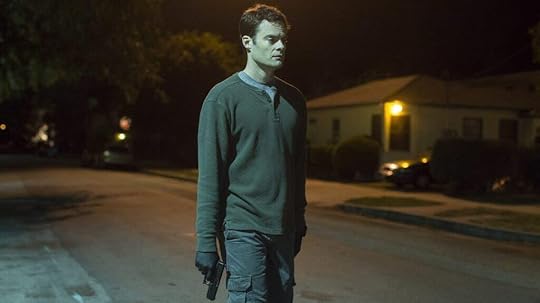
I recently started watching Barry. The dark comedy HBO series stars Bill Hader as Barry Berkman, a hitman who catches the acting bug while visiting LA on a job.
Though roughly half the show is set in and around Barry’s Studio City acting class—orchestrated by third-rate Svengali Gene Cousineau (a very primo Henry Winkler simultaneously channeling two of the original Arrested Development’s best side characters, Gene Parmesan and Barry Zuckercorn, the latter of whom is played by. . . Henry Winkler)—Barry’s drama ignites among Chechen mobsters, Bolivian drug cartels, crusty LAPD detectives, and the man that I think of as Barry’s agent, assassin-wrangler Monroe Fuches (played by character actor icon Stephen Root). Whether they’re aspiring thespians or contract killers, the conniving, venal, and mercenary people surrounding Barry are most kindly described as colorful. It’s not a question of if but to what profound depths his friends, coworkers, love interests, and acquaintances are self-involved. The killers all have main-character syndrome, while the would-be actors marinating in professional rejection would probably have a body count, too, if they thought it would get them a pilot.
And then there’s Barry. In the midst of the machine gunfire and Stanislavskian histrionics, the tall, slump-shouldered Hader is often stoically silent, if not totally dissociated. An ex-Marine who left Afghanistan behind to make a living killing the “bad guys” queued up for him by Fuches, Barry’s emotional repression and soldierly deferral of agency prime Barry’s (re)viewers for conversations about trauma and toxic masculinity (a phrase Barry himself learns from Sarah Goldberg’s Sally, the struggling actress who has no idea what actually brought him to the City of Angels). And those are conversations to be had; if I had the energy, I’d pitch around to write about war criminal Barry as a white feminist fantasy of a “good man” in honor of season 3, which was delayed, as everything was, due to COVID-19.
But I don’t have the energy. Instead of pitching, I’m getting high and watching Barry, doing my level best to avoid feeling seen. And it’s true that, other than our lazy eye, Hader’s surprisingly butch Barry and I have little in common, physically or otherwise. As Barry scales the walls of his PTSD, however, his mutedness feels familiar. There I am, in a hoodie with my mouth agape while people around me talk about things that don’t matter. Searching for purpose in a pool of guilt. Existential dread without focus, because too much is dreadful to pick just one thing.
Who’s self-involved now?
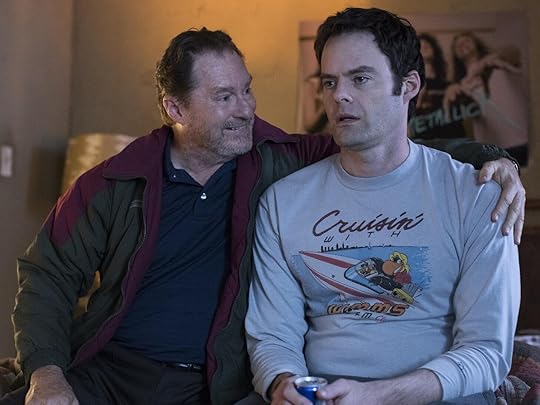
I’ve written about burnout before. I’ve been feeling it again lately, but not for any specific reason. This is an ambiguity that I resent.
But this time around, I’m going to do something about it. I think a little vacation is in order. So this post is to inform you that DAVID will be on hiatus for the month of March. And really, it’s past due! Since January of 2020, I’ve churned out weekly writing on sex, gender, friendship, family, pleasure, pain, people named David, film, TV, art, books, and queer discourse at least once a week, on top of all this other junk I have to do, like sit in my apartment and write bullshit for my boss, ask you to subscribe to support our mutual aid fundraiser, and remind my fellow Brooklyn residents that we’re not paying our gas bills to protest the massive fracked gas transmission pipeline that Nat Grid wants to run from Brownsville to Bushwick.
So. Vacation. Toward the end of the month, I’ll have some news for you about my forthcoming novel and GOOD ADVICE/BAD GAY, but otherwise, the goal is radio silence.
Until April.
David tweets at @k8bushofficial. Preorder their second novel, X (Catapult, June 2022).
Subscribe to support GOOD ADVICE/BAD GAY, an advice series from an anonymous gay therapist who’s not afraid to hurt your feelings with the truth. (Sample an unlocked post for a taste of what you’re missing.) 100% of funds go to support a rotating selection of mutual aid and reparations projects.
Want advice? Email badgayadvice@gmail.com for a free 3-month subscription.
February 21, 2022
David Davis

I don’t remember it very well, not even the fear. In exchange for allowing a man to tie me up where I sat on the ground, over the span of about sixty minutes, I was paid $200 (some of which went back to the dungeon as rent). My client didn’t make eye contact with me, didn’t even speak. He did tip, generously. If only they could all be like that.
Bondage, broadly speaking, is a somewhat new pleasure for me. After that client, I never again bottomed in a paid rope scene. While I’ve dabbled in other kinds of bondage over the years, I’ve never sought out rope recreationally, either. This is primarily because there are significant risks with rope bondage, and since I didn’t think I would enjoy getting tied up and suspended in the air, those risks seemed like more trouble than they were worth1.
Rope bondage’s reputation, earned or not, precedes it into the straight world. Unlike piercing or fisting, rope bondage has proven easier to co-opt and commodify than other leather activities. With their terror of actual transgression, straight players have been known to desexualize activities like rope bondage with so-called sensuality, a mere shadow of the erotic it’s intended to replace. When it is incorporated into straight sexuality2 as wellness, naughtiness, or some other flavor of respectable reinscription, rope is no longer the sex act. It is a predecessor to it or involved with it, an ornament or an approach, but it has been displaced by heteronormativity—downgraded from fetish to kink.
I hasten to remind you that I’m the furthest thing from a rope expert. This is just stuff I’ve observed in and out of the scene, and from talking to rope players that I know socially. It’s also extrapolation, because, as I expanded on at some length with my validity series, leathersex is, like most other queer-coded subcultures, especially ripe for commodification right now.
As with other activities that are typically classified as BDSM, certain popular modes of rope share a great deal with ancient practices that emphasize breath work, mindfulness, and endurance. A version of rope bondage has been assimilated into Wellness™ like meditation or whatever starvation cult they’re shilling as a diet these days—although maybe polework’s gentrification by racist & whorephobic fitness cosplayers is a better comparison here. In fact, many straight people who come to rope through Wellness™, or what amounts to what my grandmother might have once called a “marital aid,” are unaware that rope bondage hurts, or that it’s supposed to (or so my leather associate, leatherdyke and rigger Daemonumx, tells me). It’s not just straight people, of course: scrub just a little, and beneath the nonspecific spirituality with which some white players greasepaint their practice, you’ll find Orientalism, racism, and fetishization masquerading as profundity, preference, and mystique.
Perhaps my biggest barrier to rope, however, was in its aesthetics. The scene’s slow-burning baroque intimidated me. Other forms of torture can be subtle, sure, but rope, like other bondage, prizes form as highly as function, if not higher. Me, I’m more of a function girl: a utility knife and whatever’s around the house works just fine. Recently, a leatherman I know commented on the “clinical” approach I take to my scenes, and he was correct on more than one level, including the one having to do with flair. I’m not one for pageantry, extravagance, or hedonism, and while many players are, and god bless them for it, I resist their inclinations, which feel like static, distraction. Clear cuts in a scriptless world are one of the main reasons SM is so appealing to me, and rope is knotty.
But a few weeks ago, when Daemonumx asked the gc if anyone wanted get tied, Jade encouraged me to give it a shot. So I did. More on that later.
David tweets at @k8bushofficial. Preorder their second novel, X (Catapult, 2022).
Subscribe to support GOOD ADVICE/BAD GAY, an advice series from an anonymous gay therapist who’s not afraid to hurt your feelings with the truth. (Sample an unlocked post for a taste of what you’re missing.) 100% of funds go to support a rotating selection of mutual aid and reparations projects.
Want advice? Email badgayadvice@gmail.com for a free 3-month subscription.
1Nothing against calculated risks! We take them all the time. RACK, baby.
2Which I might argue is distinct from heterosexuality. Maybe.
Davey Davis's Blog
- Davey Davis's profile
- 55 followers



